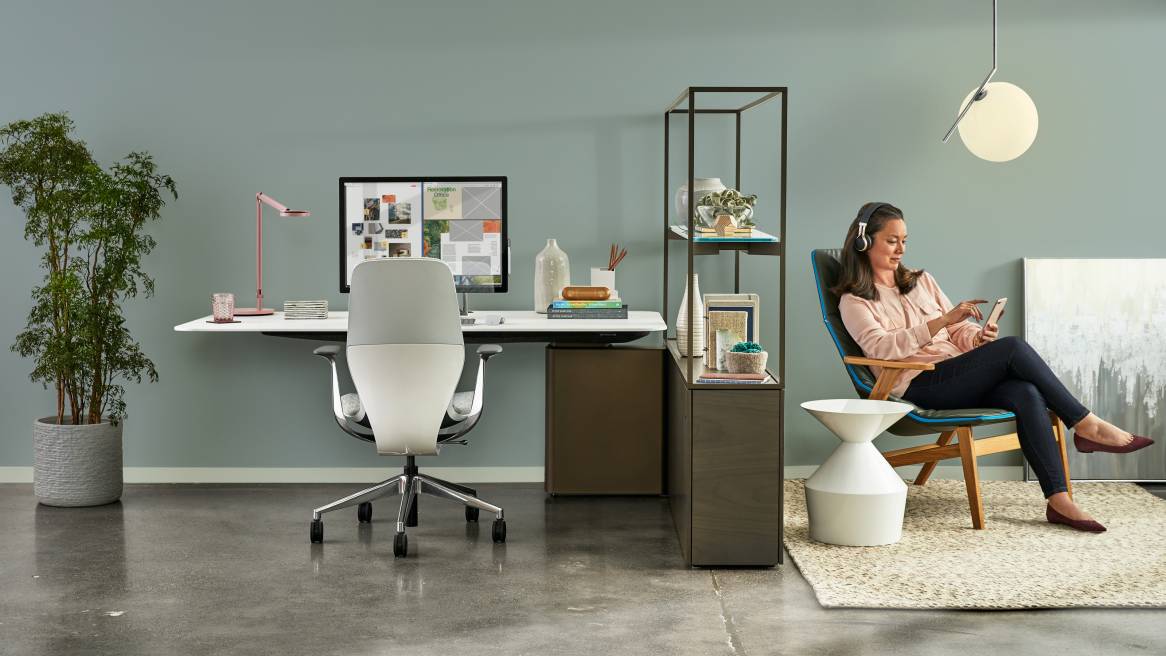Finding Balance
A New Approach to Helping People Move, Think and Feel Better
The sun isn’t up yet, but you are. You’ve learned that early morning is your best chance for personal time—before the calls start coming in, before your mind gets stretched in multiple directions, before the demands for your attention intensify. Once in the office, your day will most likely begin with a series of meetings with little or no time in between to prepare or even think about the next one. You grab lunch on the go and try to switch gears as you hurry to your next destination. Often, it feels like your brain can’t keep up with your body as you move between tasks and locations throughout the day. Your desk, if you have one, has become a mere landing spot where you try to focus on something or just catch your breath for what’s next. Staying on top of a swirl of priorities everyday is crucial for getting results in your job. And it’s definitely become a lot harder.
Stanford professor Jeffrey Pfeffer writes in his book “Dying for a Paycheck” that workplace stress is taking a physical and psychological toll on employees and costing employers billions. Nearly 50 percent of workers report that they’ve missed time at work because of job-related stress and 61 percent say they’ve become physically ill, according to his research. Pfeffer argues that the situation is getting worse and having an impact on engagement, turnover and job performance.

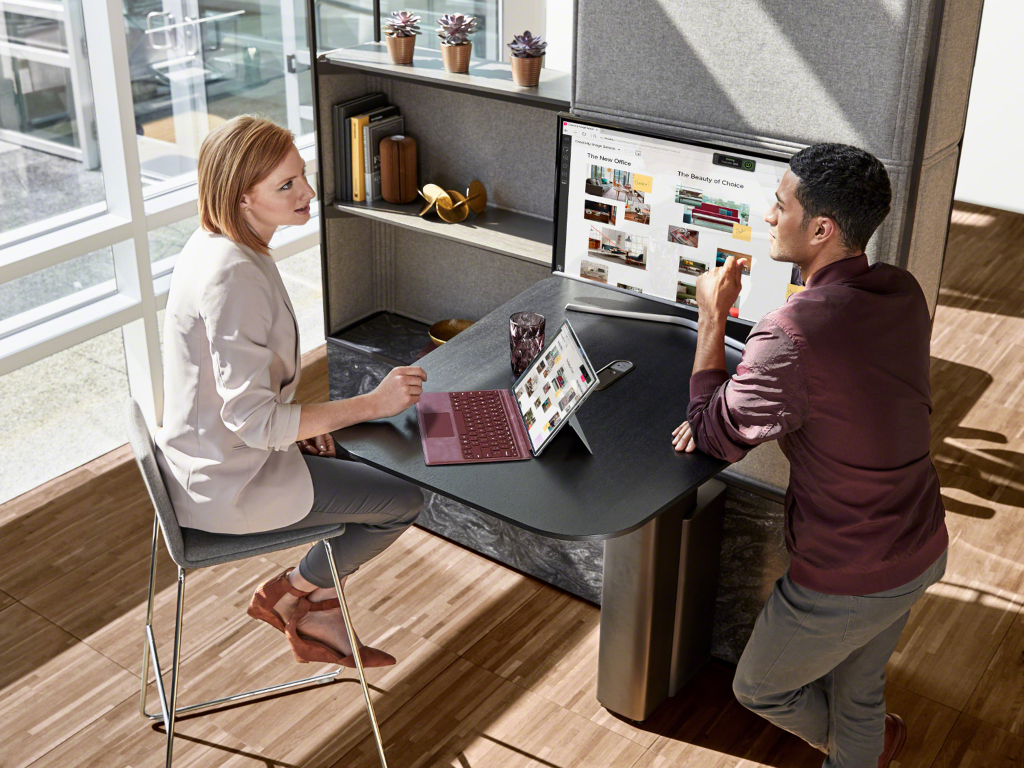
Understanding the Pandemic of High-Stress Work
Steelcase researchers Patricia Kammer and Julie Barnhart-Hoffman know that employees in leadership roles contend with tremendous stress in their high-intensity jobs. As they observed the frenetic pace of leaders’ workdays, they saw that it extracted a high toll on their energy and wellbeing — physical, mental and emotional. In detail, the researchers documented several stressors that many leaders experience nearly every minute of every day:
They need to constantly switch informational and decision-making contexts, continuously toggling their brains between macro and micro perspectives.
They’re required to manage and consume large amounts of information, masterfully filtering the relevance of multiple streams of content.
They have a high need for access to privacy, mandating easy shifts from high visibility to protected, shielded environments.
Their schedules can be highly fragmented, spanning topics and time zones, making it more difficult to process information and get into the flow of the moment quickly.
They’re more mobile than ever before, getting away from the seclusion of their private offices to enable better information flows.
They need to manage incredibly high levels of stress. Successfully meeting high performance expectations mandates balancing intense work with intervals of personal rejuvenation.
And it’s not just leaders: The researchers quickly realized that everyone is experiencing greater intensity in their jobs, though perhaps to different degrees or in different aspects of their work. As competition speeds up, work is becoming less predictable and the demands for more creative solutions have increased. We’re all dealing with huge amounts of information every day. We’re all spending more time connecting, collaborating and learning with others, but we also desperately need some time alone. Our schedules are as fragmented as a kaleidoscope and we’re more mobile than ever but, regardless, we all need to quickly reset our minds to each new moment.
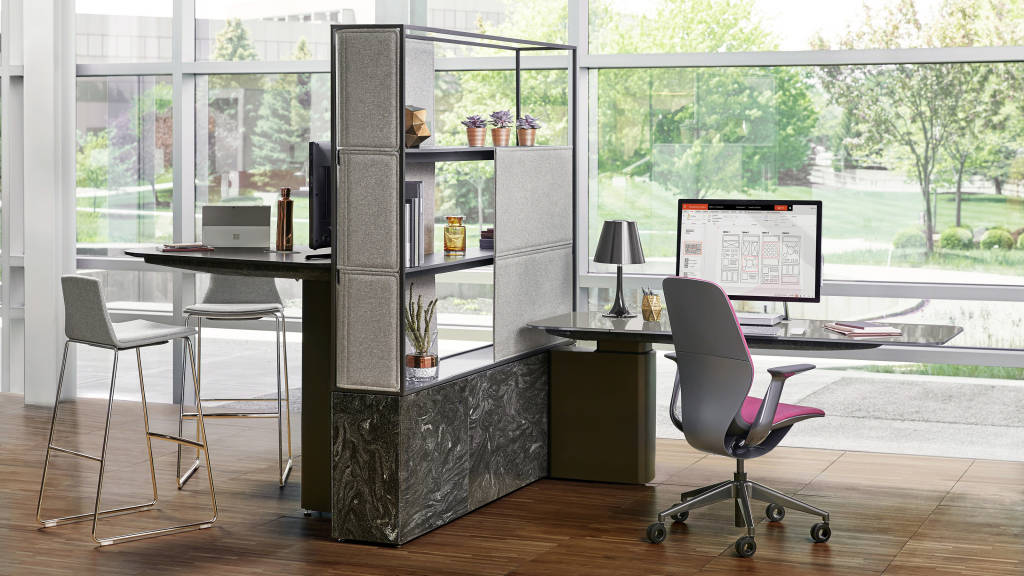
“Unfortunately, too often, offices aren’t helping people cope with how much work has changed,” explains Kammer. “Organizations are not providing employees with the types of spaces they need to manage the demands and intensity of work, and this is having a negative impact on their wellbeing. People need access to a range of settings that support different needs throughout the day — collaboration spaces, quiet corners for private conversations, private places where we can really zone in and focus, places where we can find our inner Zen. But even when all these spaces are available, proximity is an important factor. If we lose too much precious time getting there, the pace of our work slows—even though its urgency seemingly never does.”
So Kammer and Barnhart-Hoffman put their heads together with the Steelcase design studio. They asked themselves: How might the workplace be designed to nurture wellbeing and help people thrive as their work intensifies? Could they create a closely connected neighborhood with a range of options so people could quickly shift from different kinds of work — focused individual tasks, collaboration in small groups, learning from each other, socializing — creating a sense of community, just like a well-designed residential neighborhood?
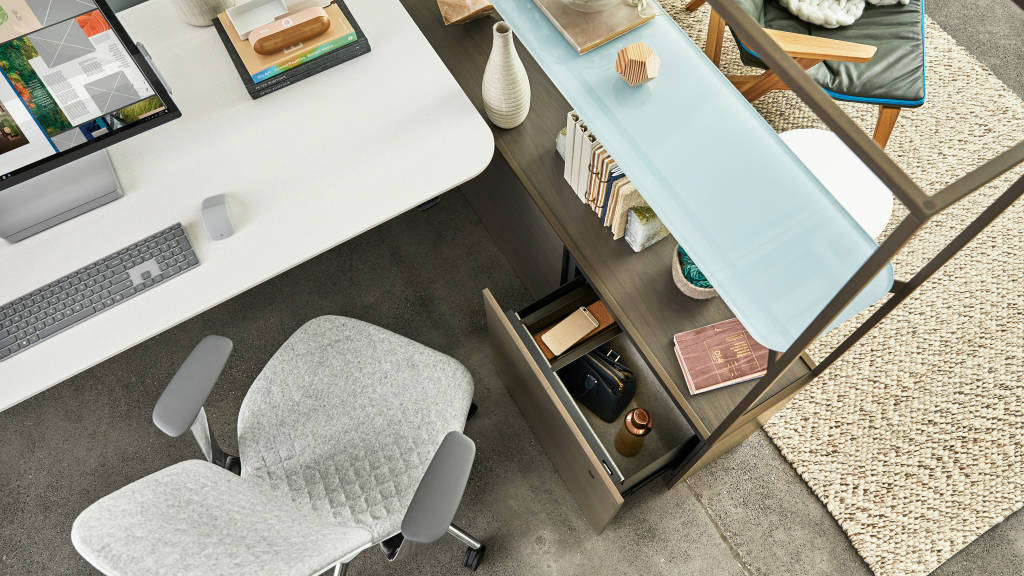
Creating a Better Experience
“The pace of work today is making it more and more difficult for people to get work done and having a negative effect of them personally and on their work,” says John Allen of the Steelcase design team. “We kept asking ourselves, ‘How can we help people who have so many demands on their time? How can we reduce all that friction of transitioning from task to task, project to project all day?’ Our design ideas were all grounded in this very deep understanding of how people are working and the impact it’s having on their overall wellbeing. We knew the solution we came up with had to do so much more to help people than just a typical desk or workstation.”
After months of prototyping and problem-solving, the team’s design-thinking discipline resulted in Mackinac (pronounced MAK-uh-naw), a total re-envisioning of the work environment. Instead of supporting just one type of work, Mackinac consists of distinct “microzones” that support focused work, collaboration among 2-3 colleagues, privacy for rejuvenation as well as easy accessibility for learning and socializing — all in a compact footprint that works in both a private office or a totally open floor plan.
“We designed Mackinac as a resident neighborhood that addresses all the modes of work that people are engaged in today and to create smooth connections among all these very different activities and states of mind. As a result it reduces the time lost going back and forth from one thing to the next, which can ease that frenetic pace a lot of people feel at work,” explains Allen.
When people are working longer hours and getting pulled in so many different directions, having softer, more textural materials close to your body is really important to your sense of wellbeing.
Like the Michigan bridge that inspired its name, Mackinac helps people connect and easily navigate from activity to activity. As the team began exploring ways to help people easily shift between working alone and connecting with teammates, they realized that table legs became a barrier to encouraging collaboration at a desk. “This insight led us to begin exploring a cantilever worksurface that is also height adjustable,” explains Allen.
“The cantilever design allows work to flow faster and really opens up the space so we can start to think about the work surface differently in terms of what it is and what it can do,” he continues. “Instead of a heavy mass that weighs things down and inhibits agility, you have this visually light but incredibly strong expanse that’s super adaptive.”
A worksurface expanse of up to 72 inches without the use of legs allows people to easily shift from individual focused work to gathering around and collaborating right at the desk. “When you have a leg at the end of a worksurface, it creates barriers — a visual barrier that can make you feel claustrophobic in a small space, and a physical barrier that can be an obstacle to collaboration because you’re always having to walk around it,” says Allen. “With a cantilever, we’re effectively eliminating barriers.”
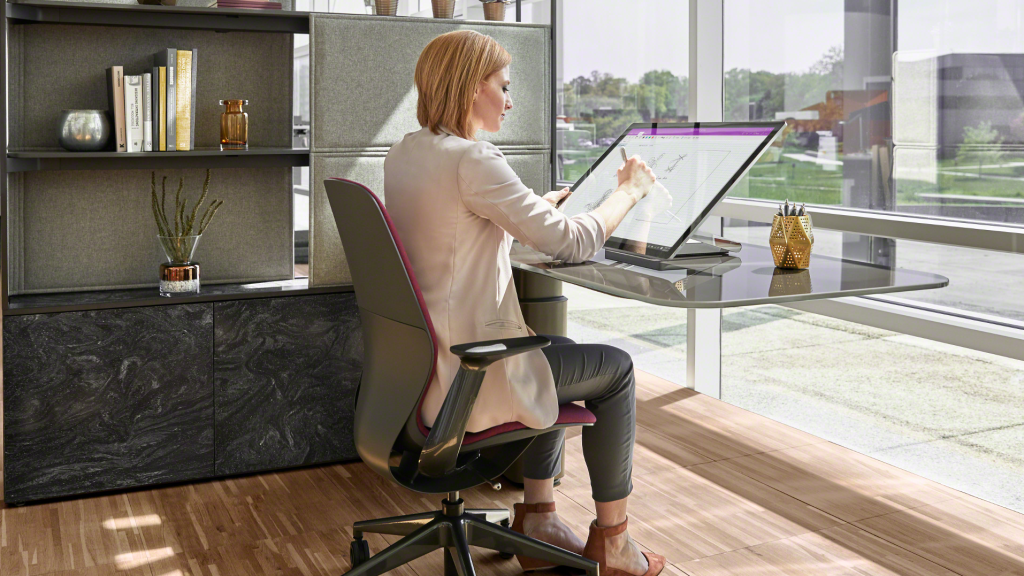
Another key element of the design is a shelving tower, which provides people much-needed visual separation to minimize distractions and allows for a moment of respite during a busy day. It can also host large-scale technology to support better collaboration. Photographs and other personal items can be displayed on open shelving, allowing people to personalize their space.
Material Comfort
The team also explored how to ensure that Mackinac would be both high performing as well as a beautiful, human-centered place that makes people feel comfortable and valued.
Mackinac was designed for an array of applications and materials carefully chosen for their visual and tactile appeal. “Our material strategy is to create a sense of coziness, comfort and peace of mind to help people cope with their crazy schedules and the intensity of their work,” explains Julie Yonehara, a senior surface materials designer. “We know that creature comforts help build a sense of wellbeing. So, especially when people are working longer hours and getting pulled in so many different directions, having softer, more textural materials close to your body is really important to your sense of wellbeing.”
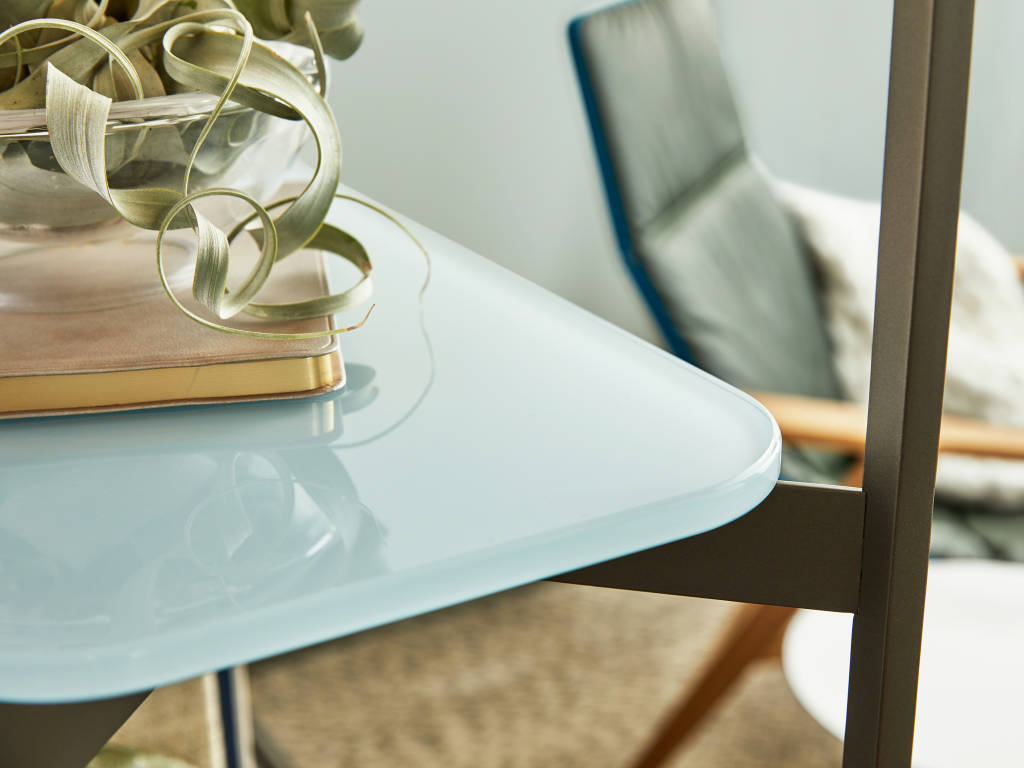

The materials offering comprises a wide range of veneers, laminates, glass, textile, Corian, paints and more. With so many different materials to choose from, Mackinac can have many different looks — from high-end executive luxury to trendy California startup. “The appearance can drastically change depending on customer need. It’s a robust canvas for implementing many different aesthetic visions and needs,” says Yonehara.
Working Healthier, Working Happier
Whenever work processes change dramatically, the edge of innovation moves too, as new needs suggest new opportunities for protecting people’s wellbeing and helping them do their best work. Mackinac was purposefully designed to reduce physical, mental and emotional stress. It bridges the distances and speeds up the transitions between tasks that slow people down, helping both leaders and their teams move, think and feel better than ever.

